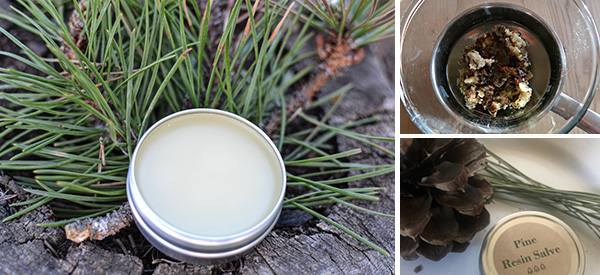
How to Make Pine Resin Salve
Pine resin salve is an incredible addition to your homemade pharmacy and a first-aid kit. It only makes sense that a substance produced by these long-lived, evergreen forest giants has the ability to help us heal.
Pine resin or sap enables pine trees to heal themselves from wounds and protect themselves from invasion from insects, bacteria, and fungus. Pine resin, along with resins from other conifer trees has been used for well over 2000 years to aid wound healing and other skin complaints.
You can see the sap that helped to heal this wound in the tree bark along with the many insect holes.
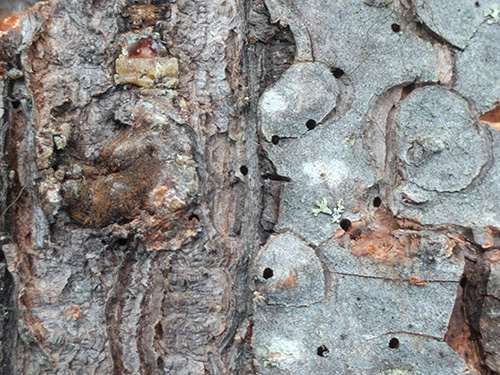
The many lichens, witch’s hair, and fungi that are living on or within this tree’s bark.
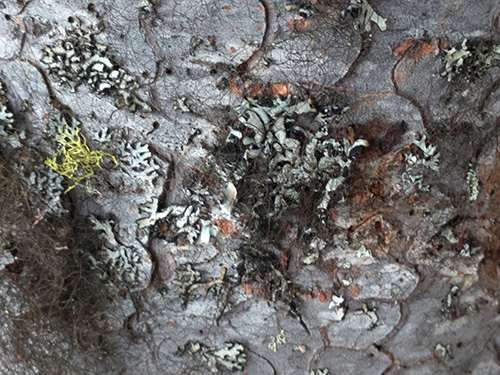
Medicinal Benefits
Learning and practicing how to use compounds from nature to create safe and effective healthcare and healing products aid us to become more self-sufficient, self-reliant, and more capable to survive and thrive. Making your own salve to treat a range of topical issues can help keep your body’s largest organ, your skin.
This salve has three key ingredients which are pine resin, a carrier oil to aid absorption, and beeswax to thicken the mixture. This recipe allows a lot of room for creativity to enable you to use what you have available. For example, the carrier oil may be infused with other healing herbs prior to mixing with the pine resin.
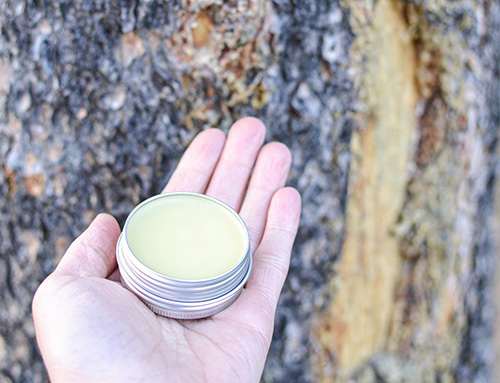
Many conifer trees such as pine, spruce, and fir produce resin or sap which hold healing compounds. Pine tree resin has been thoroughly studied to show that the soothing and antiseptic compounds have scientifically been proven to aid in wound healing as well as treating eczema, psoriasis, and dermatitis.
Additionally, there have been very positive outcomes in trials using conifer resins for chronic pressure sore treatment and even in the treatment of third-degree burns. This is thought to be due to the anti-itch, anti-inflammatory, antibacterial, and antifungal properties present in conifer tree resins. Studies also show almost zero incidences of allergic reactions to conifer tree resin concoctions.
How to Identify The Right Tree
There are several ways to obtain conifer tree resin. If you have access to conifer trees, the first step is to identify the trees you have. Simply, pine trees have needles that grow in bunches of either two, three, or five depending on the species. These needles are generally quite long, 2 to 5 inches. Fir needles are short, less than an inch, grow directly from the stems or branches, and are flat. Spruce needles are angular, 3 to 5 sided, short, and also grow directly from the branches. They can be easily rolled in your fingers.
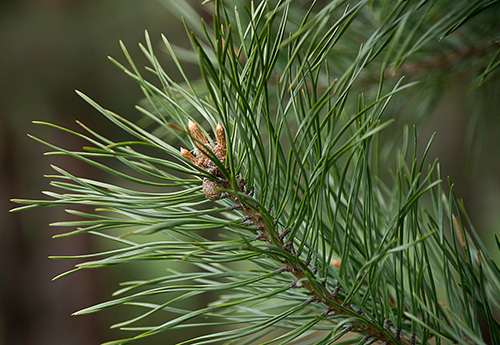
Once you know the tree or trees you have, ensure that it is safe to harvest. Harvesting from private property or in public parks can be frowned upon or even illegal, so certainly ask permission.
How and When to Harvest
The best time of year to harvest is early spring when the sap begins to flow but you can do the following technique at any time, even during the winter when the trees are in dormancy. There is no need to gouge or wound the tree trunk bark. For this technique, have a heavy thick glass container ready.
With a sharp set of pruning shears, trim one or two low branches of less than ¾ of an inch in diameter. Hold the branch over your container and allow the sap to drip from the cut end. Depending on the temperature, this may take a bit of time. In winter, you can bring the branches inside and as they warm up, the sap will begin to flow into your container.
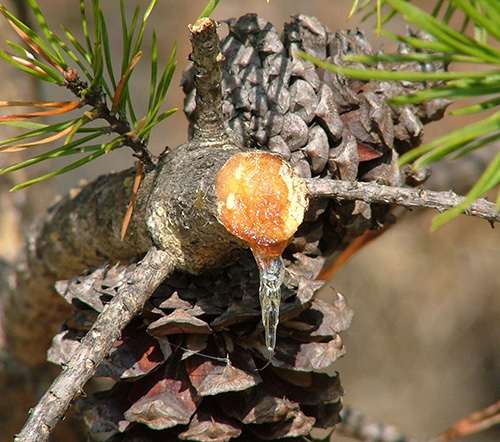
Our recipe calls for just one tablespoon of pine resin, so this is a reasonable harvesting technique for this quantity. Also, you’ll have the needles to make pine needle tea which is high in vitamin C.
Other Ways to Harvest Pine Resin
Other ways to harvest pine resin, or other conifer resin, is to find dried, an excess tree sap that had previously oozed from a wound in the bark. This needs to be carefully picked off. It is very sticky, but if it gets on your skin or clothing, it can be removed by rubbing with oil or alcohol. The softer the sap is, the better but even hard, old sap will eventually melt.
For many of us, there may not be an abundance of wild conifer trees that are available to harvest from. In this case, your local health food store or favorite online shop may have options for you, and you may be surprised at the spectacular variety to choose from.
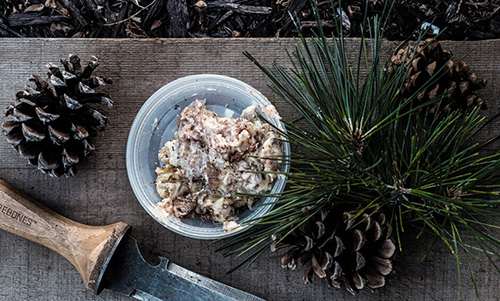
At this point, you might want to dedicate tools specifically for dealing with the sticky, tenacious substance as cleanup can be a challenge. As I loath waste, as many of you do, I have found a lazy, less wasteful process.
The Recipe:
- 1 tablespoon Pine Resin or other conifer resin such as spruce or fir.
- 2 tablespoons carrier oil. I use plain extra virgin olive oil, but sunflower, coconut, or almond would be good substitutes. As mentioned above, you can be as creative as you like, choosing to infuse your oil with complementary ingredients.
- 1 to 2 tablespoons grated beeswax. You can start with less and add more to create your desired thickness. If the mixture becomes too thick, you can always add a bit more carrier oil.
Process:
- Gather 1 tablespoon pine or other conifer resin in strong metal or heavy glass salve container. If the sap is dirty with bits of bark etc., it may need to be melted and debris filtered or combed out.

- Add remaining ingredients. Melt ingredients together.

- I place the filled salve container on the woodstove for at least a few hours and at most, overnight.

- Heating in a double boiler or slow cooker is another option. You could even try a microwave. Regardless of the heating method, it is recommended to check the container frequently.

I mix well with a toothpick or stirring implement that I don’t care too much about and allow the mixture to cool to room temperature. It should be soft and dense.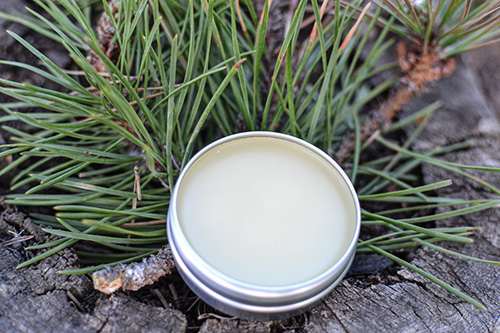
Your own pine resin salve is an excellent addition to your homemade pharmacy and first aid kit. It can be used to treat wounds, used with dressings and bandages, rubbed, or dabbed on sores, or dry, itchy skin, and used to soothe other skin conditions and discomforts.
Herbal ingredients that combine well with pine resin are calendula, thyme, tea tree, and juniper berry. These notably also aid in healing skin issues.
You may also like:
 10 Natural Remedies You Can Only Make This Winter
10 Natural Remedies You Can Only Make This Winter
What Happens If You Pour Honey Over Meat? (Video)
How To Make Willow Bark Aspirin

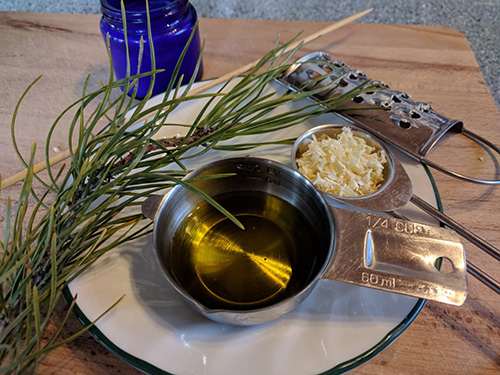
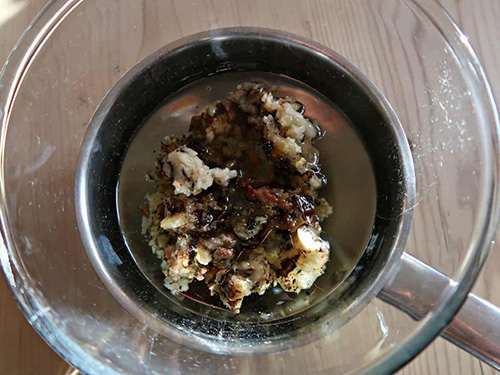
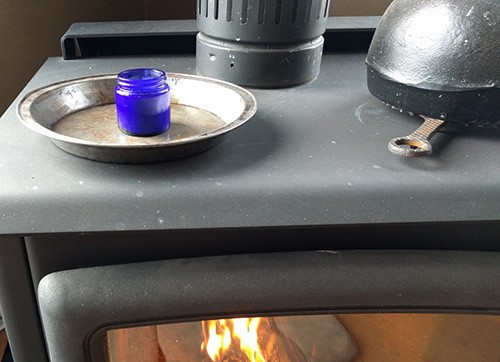
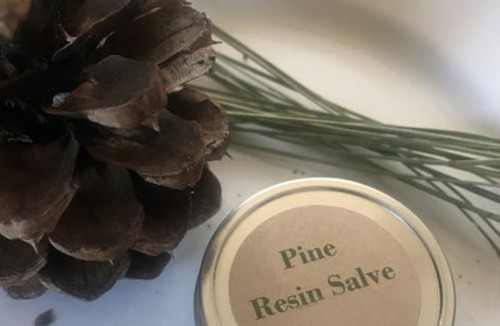
We’ve been making this for a couple years now. It also helps heal burns, bruises, and some skin irritations.
I made this salve a few times. Its really good stuff. I added some extra ingredients to my recipe. I use 100% pure Georgia pine gum rosin. I’ve noticed that no matter how long I heat the rosin in the double boiler, it never quite melts to the point where it mixes well with the beeswax and carrier oils. It just tends to mostly settle in the last jar I pour it into and becomes rock hard. I estimate about 60% of what I start with ends up at the bottom. Does anyone have any suggestions on how to get it to mix better? Thanks
Pine resin is not completely oil soluble, to dissolve it completely, you need to tincture it in high proof grain alcohol. No water.
Hmm ok. It wouldn’t work in an oil based salve though right?
If, as you say, you are using ROSIN and not RESIN, then you will always have a problem. Rosin is the byproduct left over when all the phenolic substances and tars have been ditilled out of the resin. It is mainly used for adding “tackiness” to violin strings, etc. On its own, it no longer has any medical properties and has a much higher melting point. I suggest you try again but get true resin, either from the tree or from the internet.
Hmm interesting. Are you sure it doesn’t have any medicinal properties left over? I put the melted rosin on cuts or bites while it is still somewhat liquid and it seems like it hastens the healing process. Maybe that’s just from the other stuff I added to the mixture though.
where do I find white hellebore that is organic & safe, can you recommend as source or can I order from you
All hellebore are poisonous.
Could you use Shay butter, if you don’t have bees wax?